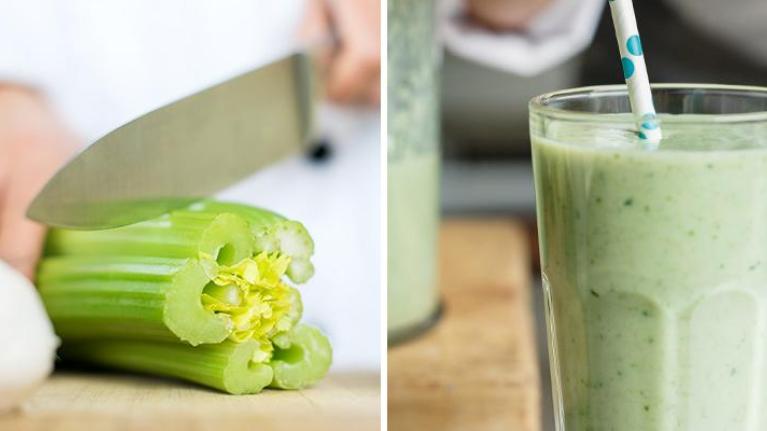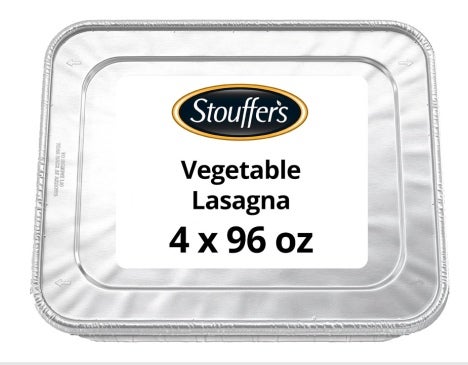
25 Ways Root to Shoot Minimizes Produce Waste
Why throw out useable produce? Learn how to maximize the yield from every vegetable you cut. It speaks to sustainability and makes for more flavor.
You’ve probably heard of “nose to tail,” an approach to reducing waste by using all of the animal—whether it’s a chicken, pig, or cow—to create more sustainable menu items. Now meet “root to shoot,” the plant-based corollary that maximizes utilization of vegetables and fruits.
For more about food waste, see below.
Not only does this strategy save money on food costs, but calling out what you’re doing on the menu or with the help of service staff will resonate with sustainability-minded customers.
- Use the cores left from trimming the florets off cauliflower and broccoli to create quick pickles, or fry them tempura-style for a side dish.
- Make an Ugly Vegetable Minestrone using less attractive vegetables, along with trim and other odd bits.
- Turn overripe or imperfect fruits into juice, smoothies, sorbet and ice creams, sauces, or jams.
- Carrot tops can be used to make pesto—delicious on a side dish or small plate of roasted carrots.
- Infuse spirits for signature cocktails with chopped fruits and vegetables, herb stems, and other produce using the sous vide method.
- Grind orange, lemon, and other citrus peels into cakes and frostings.
- Char or candy orange slices to garnish juice specialties and cocktails.
- Use pea pods, asparagus peels, and the inedible parts of artichokes to boost the flavor of soups.
- After peeling scrubbed potatoes, use the peels in frittatas or fry them up as chips for a bar snack.
- Remember classical stock-making techniques, which call for all manner of vegetable trim, including onion skins and carrot peels, parsley stems, and more.
- Muddle trim from fresh chiles, ginger root or garlic into juices, smoothies, cocktails, and soup stocks to create a kick.
- Save the skins from pulped tomatoes to dry and fry in olive oil for a salad garnish or bruschetta.
- Many vegetables can be dried and powdered for a flavoring or plate dust, including mushrooms, beets, and even onion skins.
- Use the tender inside leaves of celery as a green in salads.
- Turn corncobs into a vegetarian stock for risotto or corn chowder.
- Save the seeds from pumpkins and squashes, rinse and let dry thoroughly, then drizzle with olive oil and flavor with sea salt, chili sauce, soy, or a little harissa for a garnish or bar snack.
- Pulp from fresh-squeezed juice can be added to vegetarian “burger” patties, including those made from tofu, beans, and grains.
- Shred broccoli stalks and cabbage cores for coleslaw.
- Use radish leaves and radishes for a peppery chilled vichyssoise variation.
- Serve beets along with their delicious greens, steamed or roasted.
- Use trim from root vegetables in juice blends and dips.
- Apple, orange, and pineapple peels can be mashed and boiled with cinnamon and cloves to create a fruit infusion that amps up iced tea and lemonade.
- Add leftover chopped herbs and citrus juice and peels to softened butter for a flavorful finish for grilled meats and cooked vegetables.
- Mix tomato seeds and chia seeds to create vegetarian “caviar.”
- Make old-fashioned pickled watermelon rind!
The information provided is based on a general industry overview, and is not specific to your business operation. Each business is unique and decisions related to your business should be made after consultation with appropriate experts.
Americans throw away billions of pounds of food each year, worth billions of dollars and enough to feed millions of people. According to the Environmental Protection Agency, food constitutes about 21% of the total waste stream—more than any other single material entering the nation’s landfills and incinerators. Unfortunately, restaurants are a big part of the problem. U.S. Department of Agriculture data reveals that diners leave an average of about 17% of meals uneaten, and 55% of potential leftovers are not taken home. A single restaurant can produce about 25,000 to 75,000 pounds of food waste a year, according to USDA, and food waste comprises about half of a restaurant’s waste stream.




